The construction industry is one of the least automated industries that feature manual-intensive labor as a primary source of productivity. It is poised for a robotics revolution and the disruption that robotics and artificial intelligence can make will have significant impacts in this traditional, unautomated industry. According to McKinsey, the construction industry is one of the largest sectors of the global economy. About $10 trillion is spent every year on construction-related goods and services. However, productivity in the U.S. construction industry has barely changed since 1945. In comparison, productivity has grown by as much as 1,500% in manufacturing, retail, and agriculture. Rise of the Platform Era: The next chapter in construction technology (McKinsey & Company Oct 2020 article) describes the shift towards integrated platforms and opportunities for technology in construction. That presents an opportunity for robotics an AI innovation.
On November 12th, 2020, we held our 2nd Robotics in Construction event. The purpose of this event was to highlight some of the challenges that the construction industry face, raise the awareness of some of the latest robotic enabling technologies that are available and, most importantly, encourage an exchange of ideas to help drive solutions.
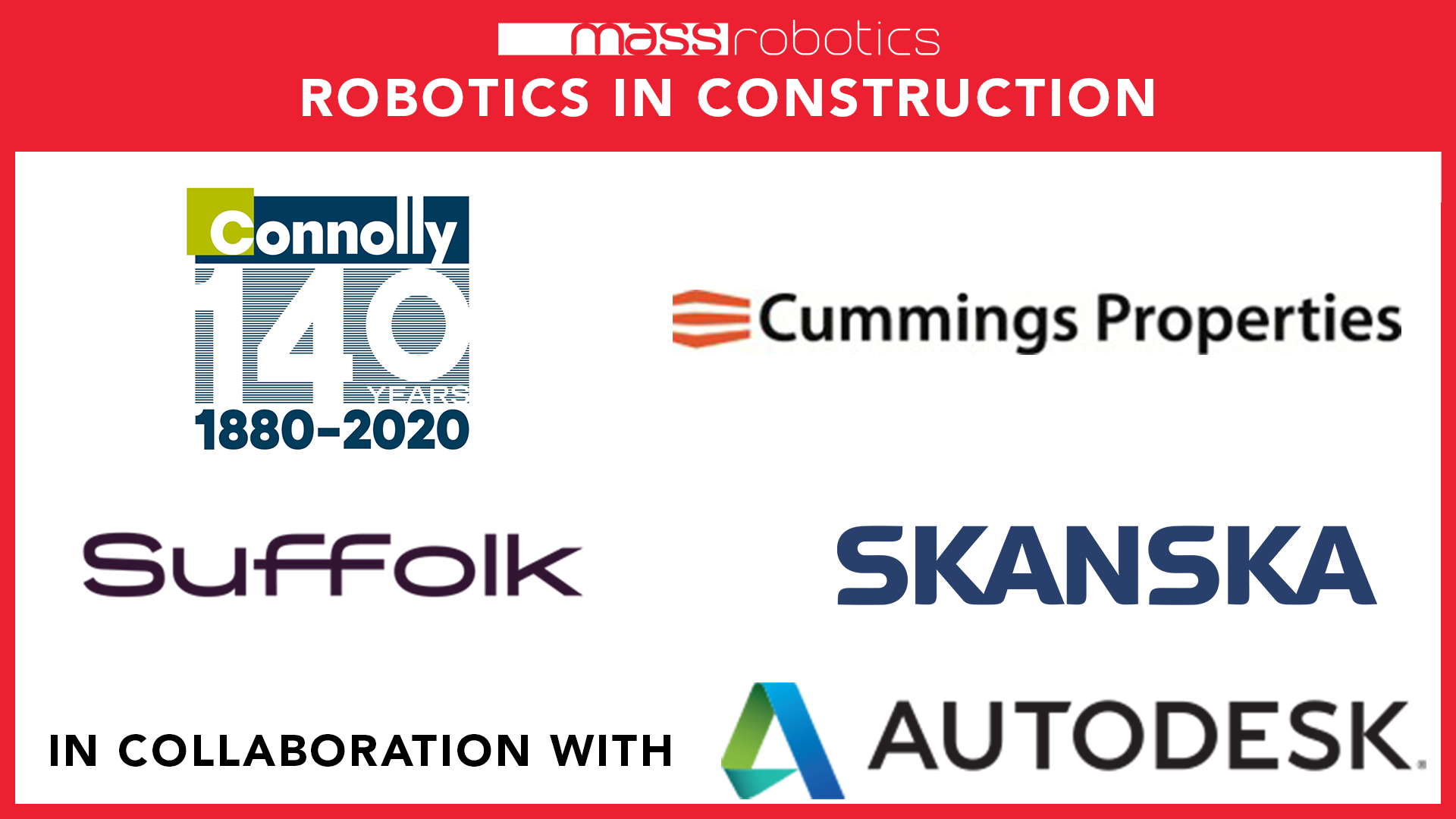
The event keynote, Jim Lynch, Vice President & General Manager, Autodesk Construction Solutions, set the stage giving a glimpse into the future of construction as well as statistics on the growth of the industry. He was followed by Jay Connolly, President, Connolly Brothers and Dan Linscott, Division Manager, Cummings Properties, who spoke about the instability and harsh conditions on a construction site and the continuously changing environments as buildings are being constructed. Sites are full of obstacles including staged materials and moving people and equipment. They offered suggestions and solutions they felt would be easily adoptable including line striping, window washing and spray touch ups.
Mike Zeppieri, Director, Innovation Services, Skanska USA, offered his perspective on robotics and automation adoption challenges and practical constraints. He also gave suggestions for roboticists to focus on solving problems including enhancing safety and human physical support – quality of life type augmentations. Raja Ghawa, Investment Associate, Suffolk Construction, then discussed Suffolk’s approach to innovation and their CoLab. He also spoke about the Suffolk Capital Technology inaugural Boost program – a four-week accelerator to assist tech startups in solving construction industry pain points.
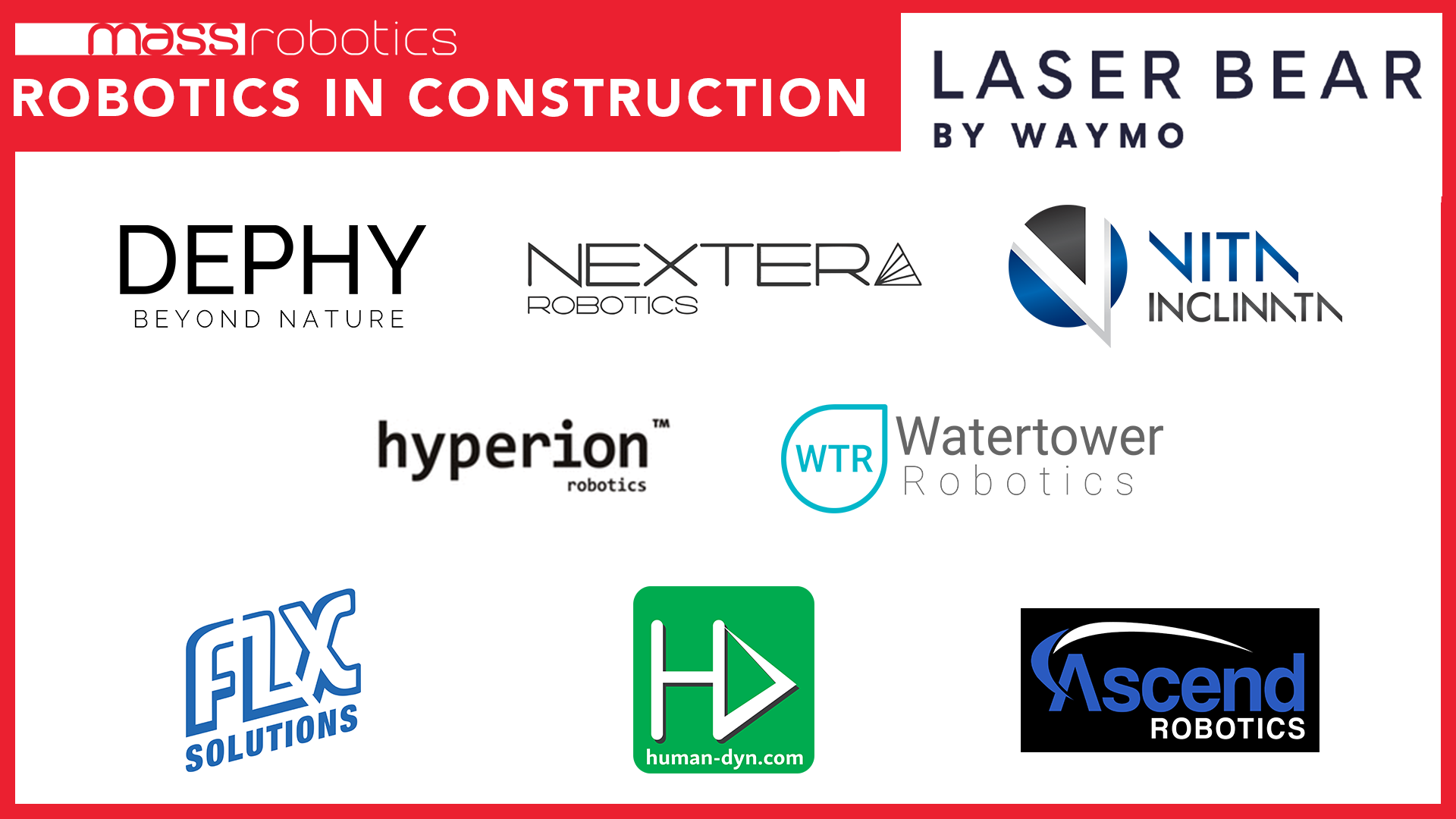
The second half of the Robotics in Construction event highlighted startup technologies that provide solutions to the construction industry challenges. They included:
• Waymo – 3D Lidar
• NeXtera Robotics – Surveying & Prefab
• Human Dynamics – Drone Inspection & Manipulation
• Watertower – Water Pipe Inspection
• Ascend Robotics – Painting
• Vita Inclinata – Crane Load Stabilization
• FLX Solutions – Snake-like Robot: Inspection and Maintenance
• Hyperion Robotics – 3D Printing, at Construction Scale
• Dephy – Wearable Technology
A limited number of guests were treated to several live demos in the lab following the webinar.
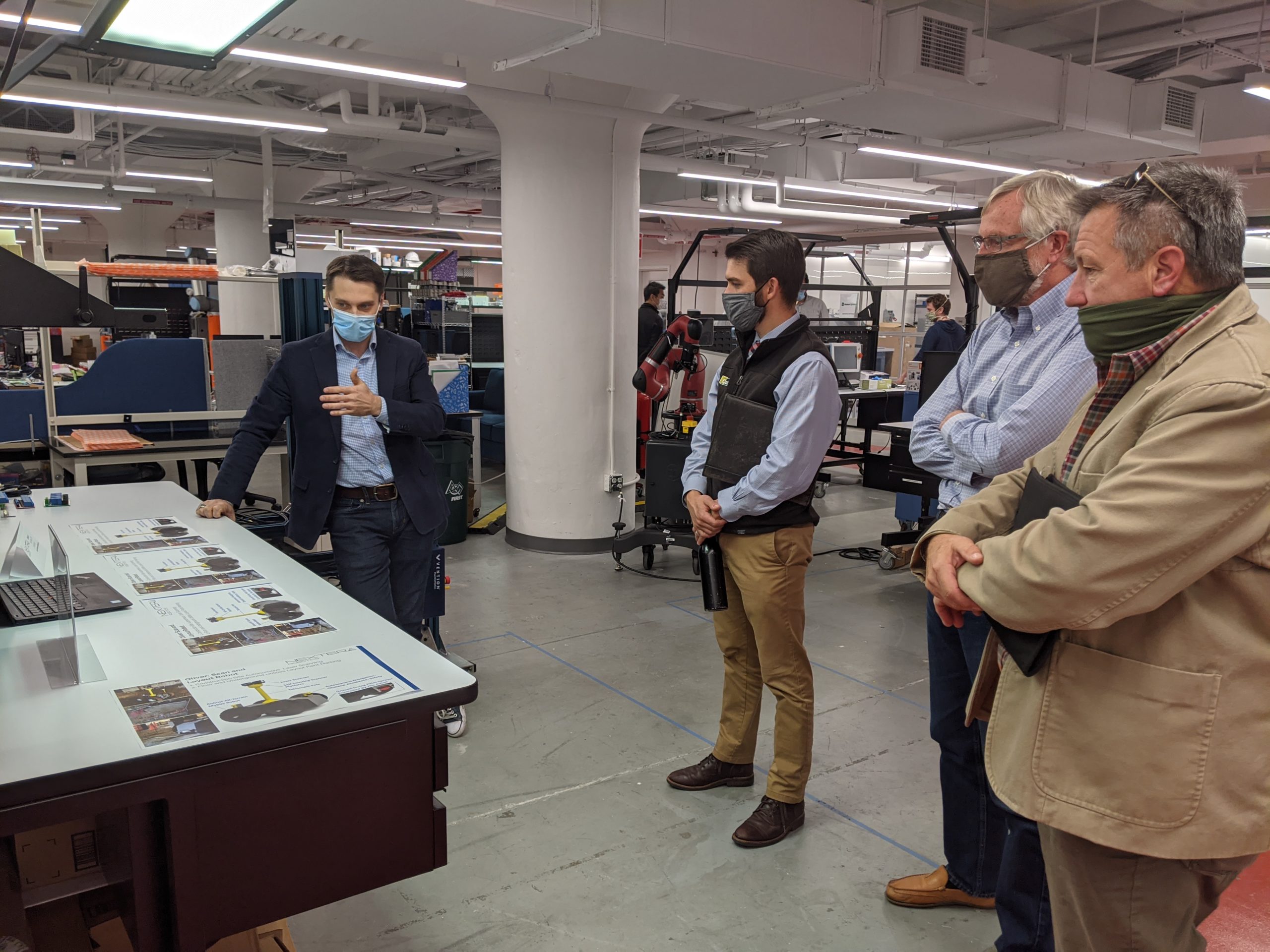
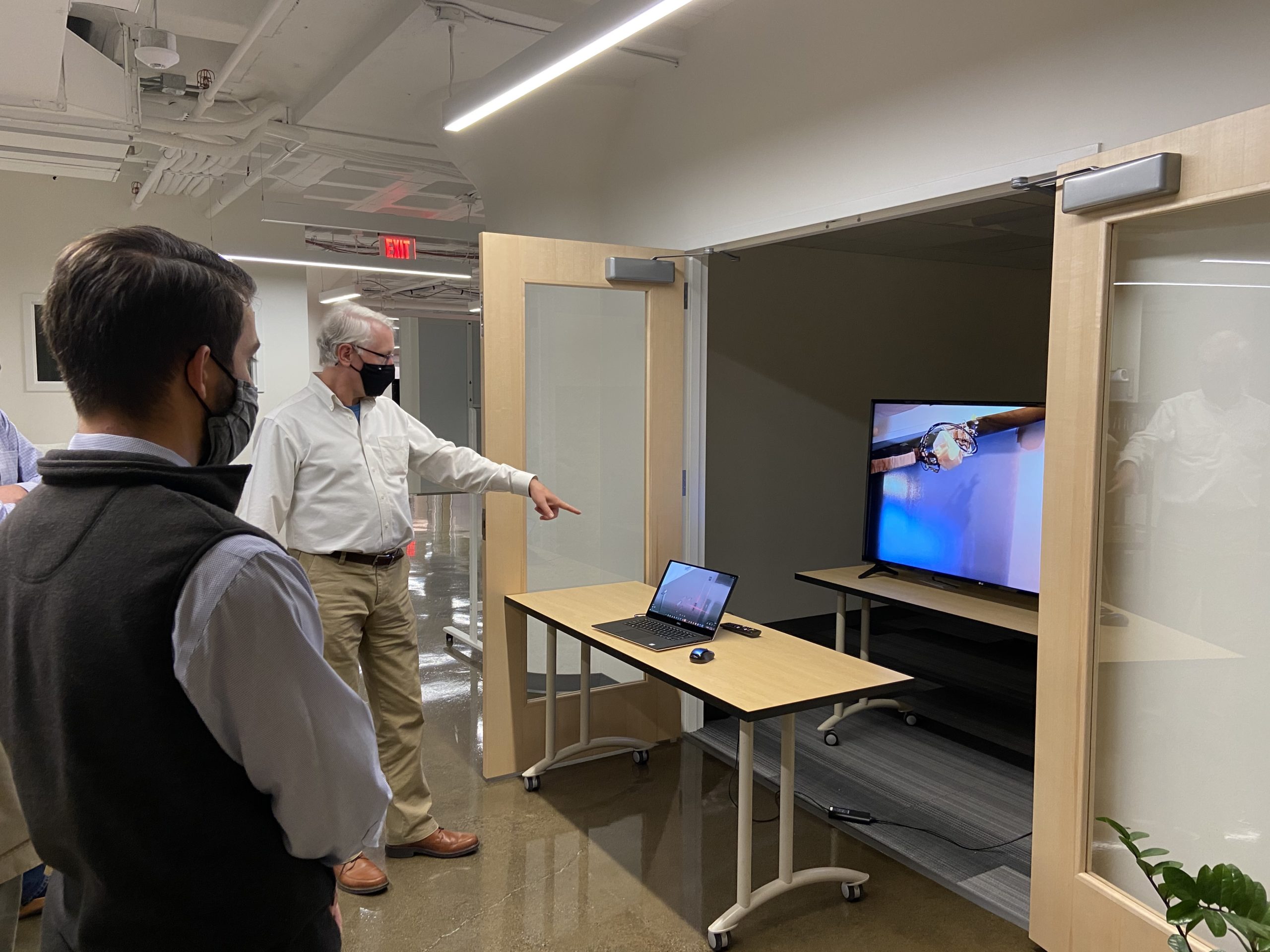
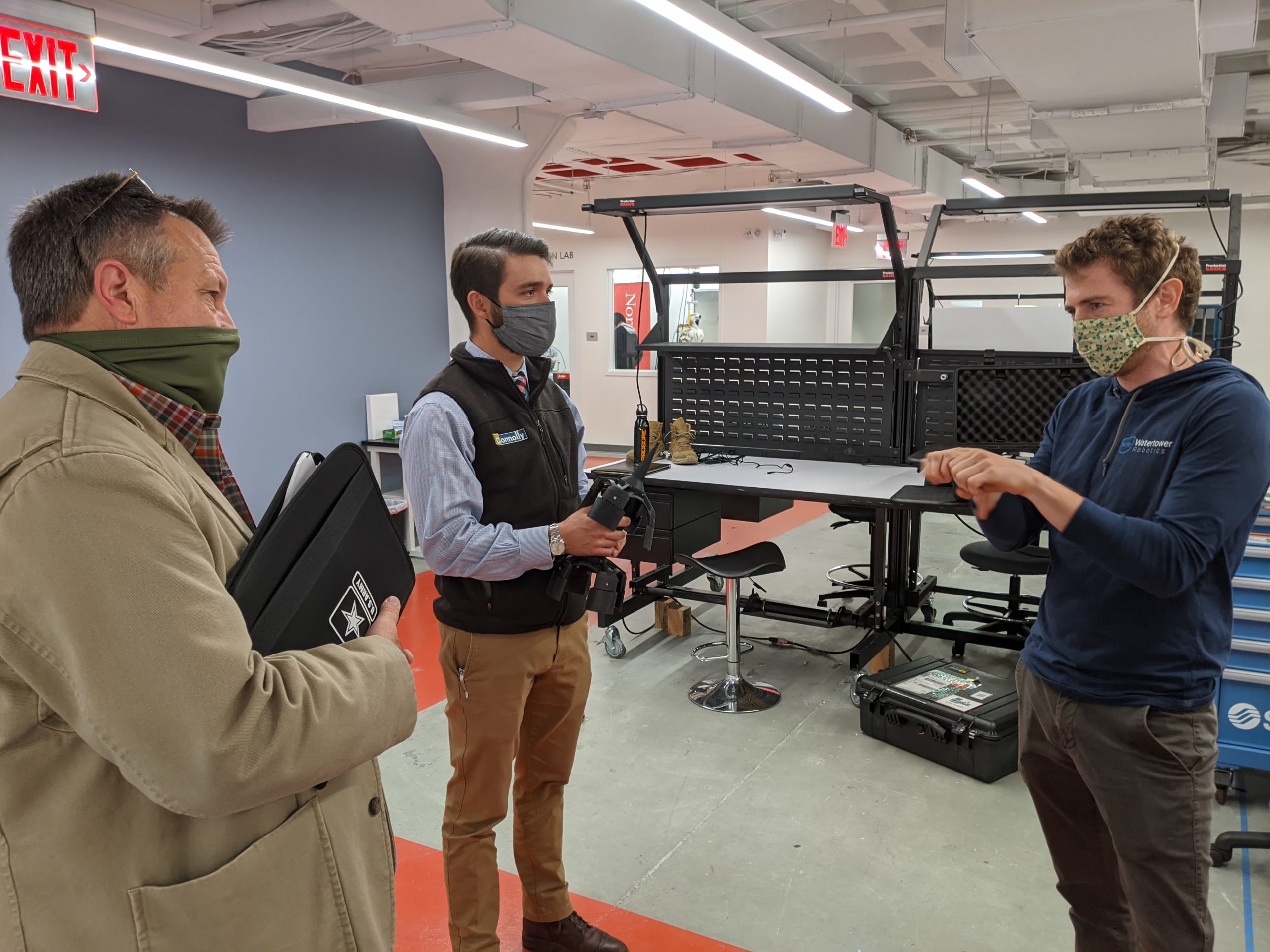
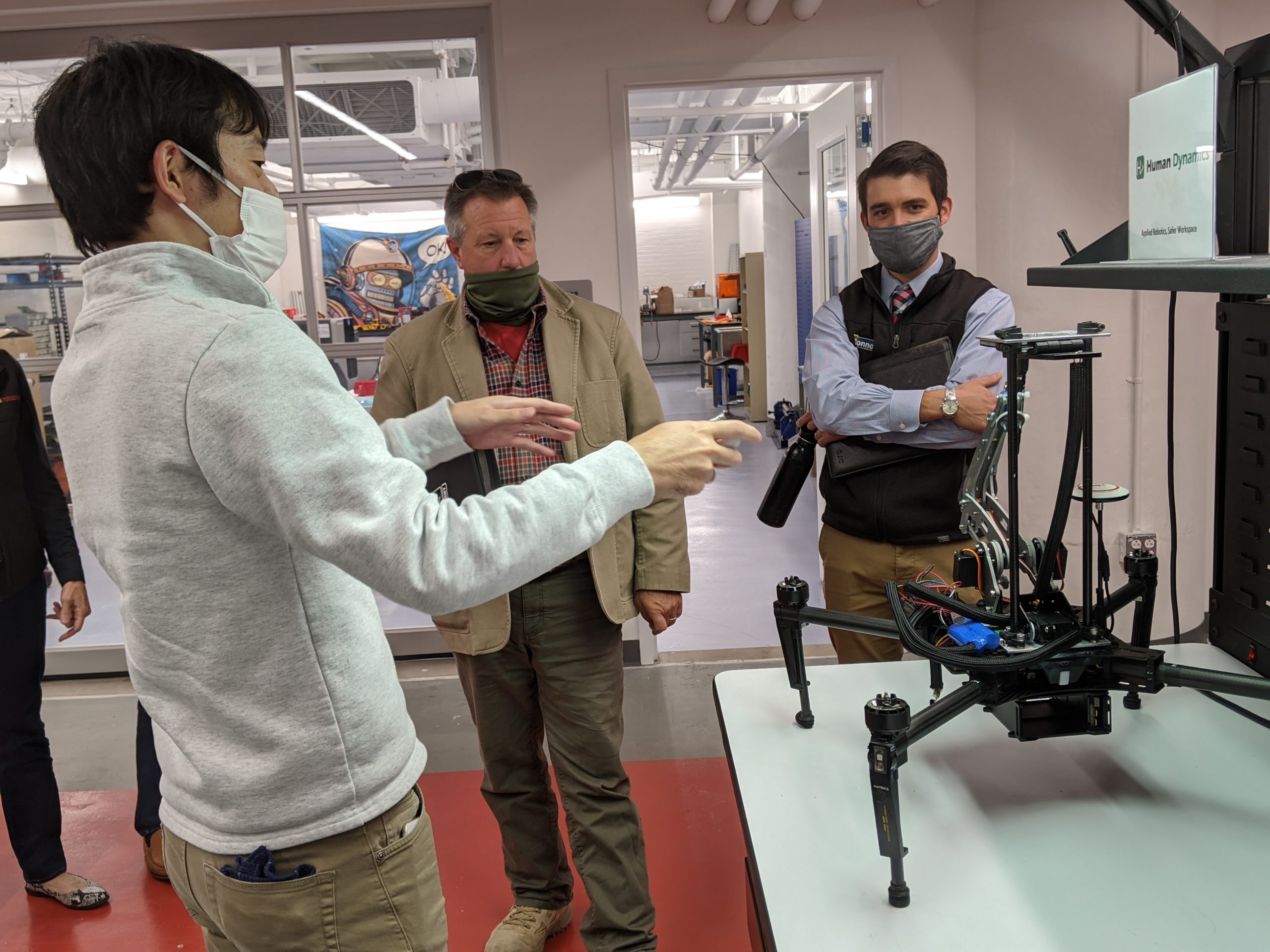
The Robotics in Construction event was the final event this year in our Signature Series focused on highlighting challenges in selected industries that can be solved with robotics technologies. This series offered a platform for information sharing between potential solution providers and those who could benefit from robotics adoption. This series also covered the logistics, defense, and manufacturing industries.
See full recording of the event here and recap in Digital Builder, “How Construction Companies Can Overcome Barriers to Adopt AI & Robotics”, here.